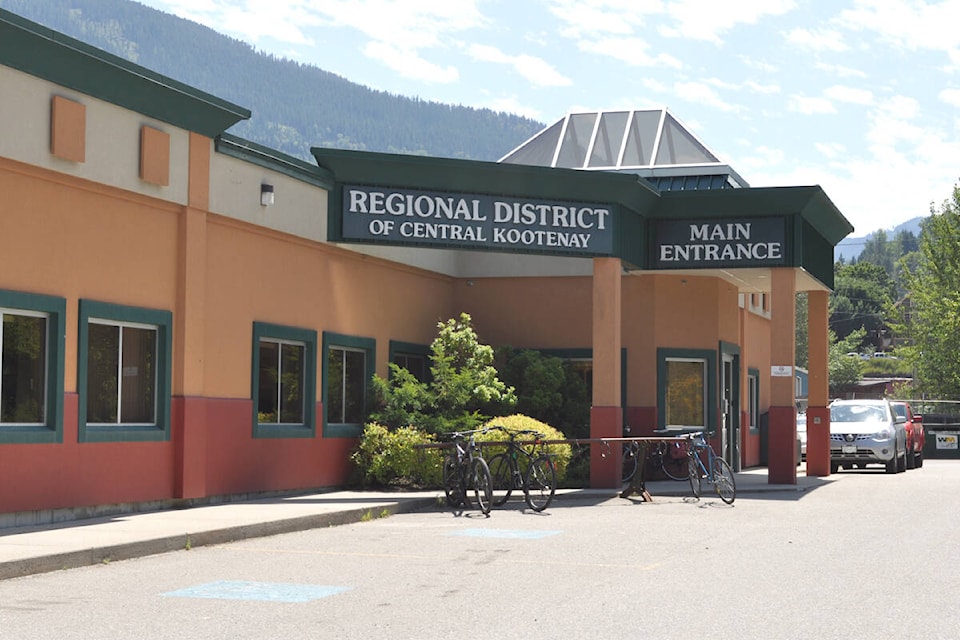by Timothy Schafer
Local Journalism Initiative Reporter, The Nelson Daily
The planning cup runneth over when it comes to climate change action in the regional district, at least according to some of its directors.
Eleven directors on the 20-person board for the Regional District of Central Kootenay (RDCK) felt enough planning had been done on climate change action and that the development of another — the 2023-26 Climate Action Plan — was too much.
The action needed to be put into climate action, not more planning, said RDCK board chair Aimee Watson. The money proposed for the plan — $80,000 — could be used to put some aspects of prior plans into practice, she explained.
“We have a lot of plans … and this $80,000, from my perspective, needs to go to action, not to more planning. I feel we have strategized and planned for a decade … and we have a lot of actions to act on, so I’m not in favour of another plan,” she said.
Watson pointed to the already completed state of climate action plan, climate action policy and the Renewable Kootenay Plan — that had two years of documentation on public engagement and committee meetings that identified the RDCK needs.
“I don’t want us to repeat that work, and I am very concerned that when we go to consultants that don’t understand the rural context, we end up in the same position,” she said.
“I don’t disagree that we need a good plan, but what I disagree with is we keep engaging and planning and not acting. We have a lot of information to act upon, I don’t want to engage the public again.”
An RDCK staff report presented the budget for the development of the 2023-2026 climate action plan and community engagement strategy, with the strategy informing the four-year implementation of the plan. All costs were to be paid from the CARIP funds.
However, with weighted voting factored in, the nine voices in favour of the latest plan were enough for it to see the light of day.
The reason staff was proposing putting another plan together was that, currently, it did not have a plan in place to use as a state of climate action tool, said Sangita Sudan, RDCK manager of development services.
“We don’t have a plan that provides objectives and strategies on how to get there,” said Sudan.
Area E director Ramona Faust said the RDCK formulated a climate action plan in 2010 but 12 years later it needed to be updated.
“It is likely time to set some clear goals and objectives that the community can tick off or get involved, and innovators can come forward,” she said. “Conditionally I agree with this, but there is some nuance missing.”
Planning the plan
In February the work began to prepare a four-year climate action plan — starting in 2023 — to look ahead to climate action targets to reduce carbon pollution (greenhouse gas emissions) by 50 per cent below 2018 levels by 2030, and 100 per cent by 2050.
The climate action plan will focus on community and corporate low carbon resilience, noted RDCK sustainability planner Marshall Smith in her report.
“This approach supports communities in advancing towards a strong and adaptable future by bringing together reduction of carbon pollution (climate mitigation), community resilience (climate adaptation) and other local government priorities,” she wrote.
What was proposed by staff was to fund the development of a guiding plan — of which it is only a small portion of the overall budget, Smith said — which is actually taking action and engaging with the communities.
“This is what we see as the critical edge for climate action is to engage with community. And we do have numerous actions that we can build upon through the work with 100 per cent renewable energy, and we do intend to meet with small communities and have face-to-face conversations and understand how to create a rural, localized, RDCK appropriate plan,” she said.
The intent of the on-going climate action community engagement was two-fold, Smith contended: First, to create an internally-embedded RDCK climate action culture that prioritizes low carbon and adaptive measures in all decision making.
“Second, to create an external climate action culture where residents see the RDCK as partner in climate action, a place for information, accountability and co-ordinated action, with the overall goal of RDCK residents, institutions, and industry having a greater motivation for climate action and commitment to 2030 science-based targets,” she said.
The climate action community engagement multi-year process will involve many groups of stakeholders and all aspects of RDCK services.
“To create an effective climate action community engagement process, staff are seeking external expertise in the form of communication, engagement and design consultants,” Smith wrote in her report.
“It is understood that there is a significant gap between what can be currently accomplished and the targets proposed, primarily in resource recovery, fossil gas combustion, and commercial vehicles.”
